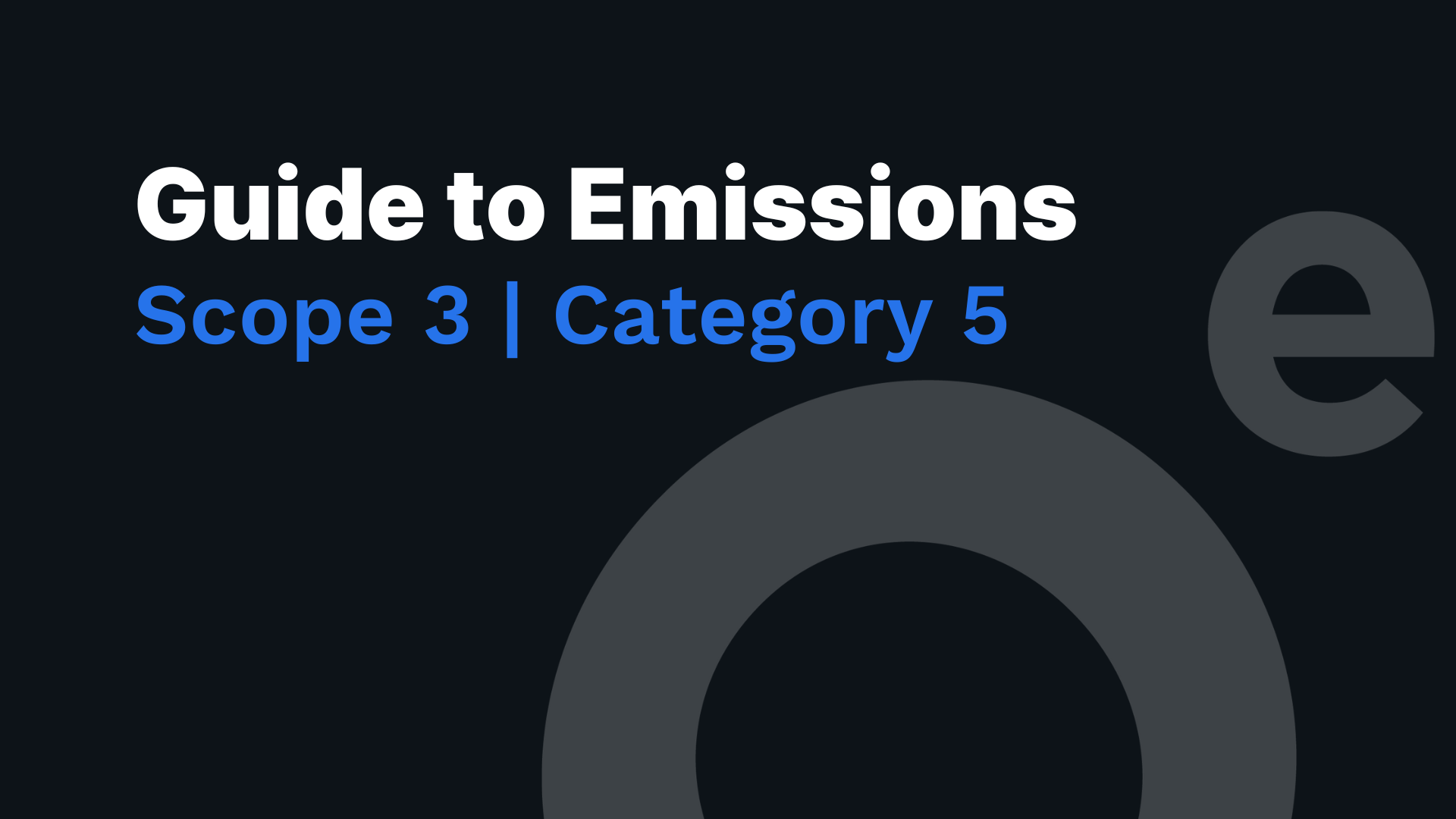What is Scope 3 Category 5 Emissions?
Category 5 covers emissions resulting from third-party disposal and treatment of waste produced by a reporting company's owned or controlled operations within the reporting year. This category encompasses emissions from both solid waste and wastewater disposal.
Scope 3 includes waste treatment carried out by third-party facilities, whereas waste treatment at facilities owned or controlled by the reporting company falls under Scope 1 and Scope 2. Waste management services are considered an upstream scope 3 category since they are procured by the reporting company.
Waste treatment activities can involve:
Landfill disposal
Landfill-gas-to-energy (LFGTE) disposal, which involves converting landfill gas into electricity
Recycling recovery
Incineration
Composting
Waste-to-energy (WTE) or energy-from-waste (EfW), which involves generating electricity by combusting municipal solid waste (MSW)
Wastewater treatment.
The reporting company's scope 3 emissions from waste produced in operations stem from the scope 1 and scope 2 emissions of solid waste and wastewater management businesses. Companies may choose to include emissions from waste transportation using third-party vehicles.
What Data is Needed?
To calculate emissions from Scope 3 Category 5, which pertains to waste generated in operations, businesses need to collect the following data:
Waste types and amounts: Gather information about the types and amounts of waste generated in the company's owned or controlled operations, including both solid waste and wastewater.
Waste treatment methods: Obtain data on the waste treatment methods employed by third-party facilities, such as landfill disposal, recycling, incineration, composting, waste-to-energy (WTE) or energy-from-waste (EfW), and wastewater treatment.
Waste management service providers: Collect information about third-party waste management service providers responsible for waste disposal and treatment.
Emission factors: Gather appropriate emission factors for each waste treatment method, which can be obtained from sources like the GHG Protocol, the Intergovernmental Panel on Climate Change (IPCC), or national or regional environmental agencies.
Transportation data (optional): If applicable, collect data on the transportation of waste to third-party facilities, including distances traveled, mode of transportation, and associated fuel consumption and emission factors.
Once all relevant data is collected, companies can calculate their Scope 3 Category 5 emissions by applying the appropriate emission factors to the waste treatment methods, accounting for the types and amounts of waste generated and any optional transportation-related emissions.
What methods is available to count the emissions?
Companies can choose from the following methods to calculate emissions from waste generated in their operations but managed by third parties:
Supplier-specific method: Obtain waste-specific scope 1 and scope 2 emissions data directly from waste treatment companies (e.g., for incineration or recycling recovery).
Waste-type-specific method: Utilize emission factors tailored to specific waste types and waste treatment methods.
Average-data method: Estimate emissions based on the total waste directed towards each disposal method (e.g., landfill) and average emission factors for each disposal method.
These methods provide businesses with clear options for assessing emissions from waste generated in their operations, enabling them to select the most suitable approach for their needs.
